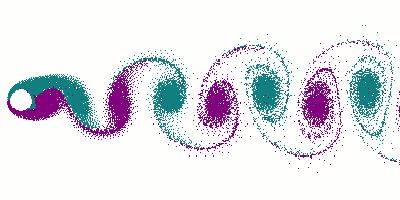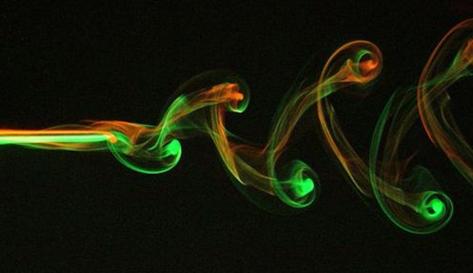Effluent plume exit velocity to ambient cross-flow ratio, R is defined as follows:
R = U0/Ua, where
U0 is the effluent plume exit velocity and
Ua is the ambient cross flow velocity.
WAKE FLOW DISCHARGE CONDITIONS generally occur whenever the effluent discharge exit velocity (U0) is less than or equal to the ambient cross-flow velocity (Ua),
i.e. R = (U0/Ua) ≤ 1.00
Wake flows are characterized by unsteady "patchy" plumes with high,instantaneous effluent concentrations. At any downstream location from the discharge source there are instantaneous, high concentration pools of
effluent flowing by, followed by periods of low concentration effluent pools; The effluent mixing is hence un-steady in behavior.
The observed and/or measured and reported steady state Dilution S values and/or plume trajectory values generally represent a time average and do not capture the patchy nature of the
effluent mixing in the ambient.
Because of the "patchy" quality of wake flows, measurements of plume trajectory, width, and dilution in laboratory and
field studies may be difficult and furthermore may be subject to significant measurement errors.


Wake Flow Discharge Conditions |
|
|
|
Wake flow animation. Vortex shedding behind a circular cylinder. In this animation, the flow on the two sides of the cylinder are shown in different colors,
to show that the vortices from the two sides alternate.
Courtesy, Cesareo de La Rosa Siqueira. Source, WikiPedia
von Karman vortex sheet and shedding typical of Wake Flows Shown by LIF Image.
|
|
Additionally, the steady state dilution S values and/or plume trajectory values reported by any steady-state mixing model like PLUMES, OOC or CORMIX generally represents
time averaged values and does not capture or represent the patchy nature of the effluent mixing in the ambient.
The CORMIX Mixing Zone Model is the only model that alerts/warns the end user to the occurrence of such WAKE FLOW CONDITIONS and provides suitable design recommendations to remedy such discharge conditions. |
|

